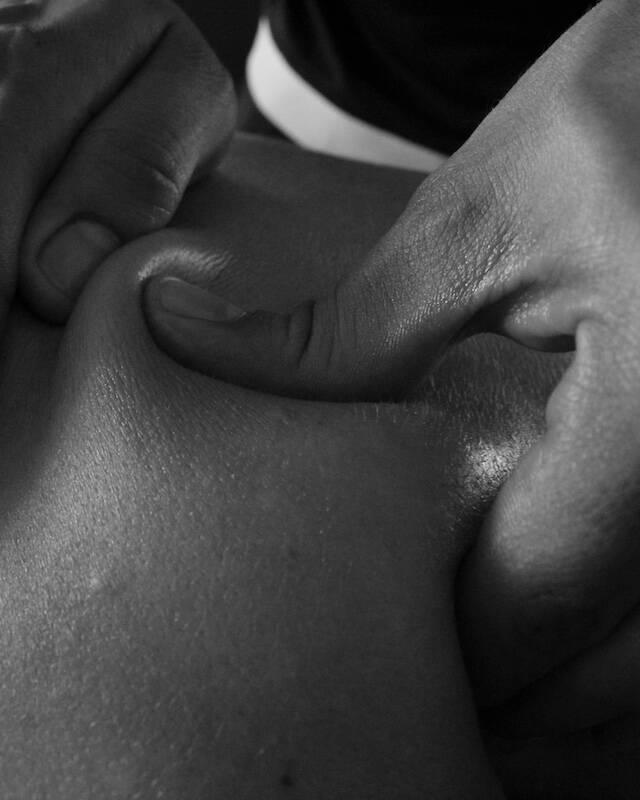When it comes to alleviating muscle tension, improving mobility, and fostering relaxation, both Muscle Release Technique (MRT) and traditional massage are widely used methods. While they share a common goal of enhancing musculoskeletal health, their approaches, applications, and benefits differ significantly. At Dorsa Chiropractic, we understand the importance of choosing the right modality for your needs, and this guide will help you understand the key differences between MRT and traditional massage.
What Is Muscle Release Technique (MRT)?
Muscle Release Technique (MRT) is a specialized form of therapy designed to address musculoskeletal dysfunction by targeting specific areas of muscle tension and adhesions. MRT combines precise pressure with guided movement to release tight muscles, reduce scar tissue, and improve range of motion. It’s often used by chiropractors and other practitioners to treat acute injuries, chronic pain, and restricted mobility.
What Is Traditional Massage?
Traditional massage encompasses various techniques aimed at relaxation, stress relief, and improving circulation. Modalities like Swedish massage, deep tissue massage, and sports massage focus on using hands-on manipulation of the muscles and soft tissues. While traditional massage can also address tension and discomfort, its primary emphasis is on promoting overall well-being and relaxation.
Key Differences Between MRT and Traditional Massage
1. Purpose and Focus
- MRT: The primary focus of MRT is therapeutic. It’s used to address specific issues such as muscle adhesions, scar tissue, and restricted movement. MRT is especially beneficial for individuals recovering from injuries, dealing with chronic pain, or seeking to improve athletic performance.
- Traditional Massage: Traditional massage prioritizes relaxation and stress relief. While it can help alleviate muscle tension, it’s generally less targeted and doesn’t address the root cause of musculoskeletal dysfunction in the same way MRT does.
2. Techniques Used
- MRT: MRT involves a combination of manual pressure and active or passive movements. Practitioners apply pressure to specific points while guiding the patient through movements to stretch and release the muscle. This dynamic interaction makes MRT highly effective for breaking up adhesions and restoring function.
- Traditional Massage: Traditional massage relies on techniques like kneading, gliding, tapping, and friction to manipulate the muscles and soft tissues. These methods are more generalized and often focus on promoting relaxation and improving blood flow.
3. Conditions Treated
- MRT: Commonly used to treat:
- Acute and chronic injuries
- Scar tissue and adhesions
- Muscle spasms and tightness
- Limited range of motion
- Sports injuries
- Postural imbalances
- Traditional Massage: Commonly used for:
- General stress relief
- Muscle soreness and fatigue
- Relaxation and improved sleep
- Enhanced circulation
4. Patient Involvement
- MRT: MRT is an active therapy that often requires patient participation. Patients may be asked to perform specific movements or engage certain muscles while the practitioner applies pressure. This collaboration ensures that the targeted muscles are effectively released.
- Traditional Massage: Traditional massage is typically passive, with the patient lying down and relaxing while the therapist performs the techniques.
5. Intensity and Sensation
- MRT: Sessions can be more intense because MRT directly addresses problem areas. Patients may feel discomfort during treatment as adhesions are released, but this is usually followed by a significant reduction in pain and improved mobility.
- Traditional Massage: Traditional massage is generally gentler, with techniques tailored to the patient’s comfort level. It’s designed to soothe rather than challenge the body.
Benefits of MRT
MRT offers a range of benefits for individuals dealing with specific musculoskeletal issues:
- Targeted Relief: By addressing the root cause of muscle dysfunction, MRT provides long-lasting relief.
- Improved Mobility: Breaking up adhesions and releasing tight muscles restores natural movement patterns.
- Enhanced Recovery: MRT accelerates healing by improving blood flow to injured tissues.
- Postural Alignment: It helps correct imbalances that contribute to pain and dysfunction.
- Athletic Performance: Athletes benefit from improved flexibility, strength, and reduced risk of injury.
Benefits of Traditional Massage
Traditional massage also has its own set of advantages, particularly for general wellness:
- Relaxation: Reduces stress hormones and promotes a sense of calm.
- Improved Circulation: Enhances blood flow, delivering nutrients to tissues and aiding in detoxification.
- Pain Relief: Alleviates muscle soreness and tension.
- Better Sleep: Encourages relaxation and helps with insomnia.
- Mood Enhancement: Stimulates the release of endorphins, the body’s natural “feel-good” chemicals.
When to Choose MRT Over Traditional Massage
You might consider MRT if:
- You’re recovering from an injury and need targeted therapy.
- You’re experiencing chronic pain or tightness that limits your mobility.
- You’re an athlete looking to improve performance or prevent injuries.
- You’ve tried other therapies with limited success and need a more specialized approach.
When to Choose Traditional Massage Over MRT
Traditional massage is an excellent choice if:
- You’re seeking relaxation and stress relief.
- You want to enhance your overall sense of well-being.
- You’re dealing with general muscle soreness or fatigue without a specific injury.
Combining MRT and Traditional Massage
At Dorsa Chiropractic, we recognize that MRT and traditional massage are not mutually exclusive. In fact, they can complement each other beautifully. For instance, a patient might benefit from MRT to address a specific injury and follow it with traditional massage to promote relaxation and support overall recovery. Combining these therapies can provide a holistic approach to musculoskeletal health.
Both Muscle Release Technique and traditional massage have their place in maintaining and restoring musculoskeletal health. Understanding the differences between these therapies can help you make an informed decision about which is best for your specific needs. If you’re unsure, our team at Dorsa Chiropractic is happy to guide you toward the right treatment plan. Contact us today to schedule a consultation and take the first step toward a healthier, more mobile you.

Welcome to Dorsa Chiropractic. We started this practice to help people like you feel great!
When you visit us here at Dorsa Chiropractic, we’ll go over your injury, pain points, or general wellness goals. Our doctors will conduct an assessment to verify the root of your physical symptoms to come up with a plan for bringing your body back to health.

